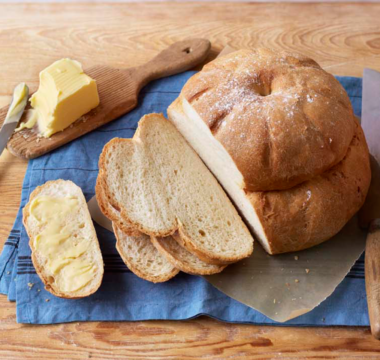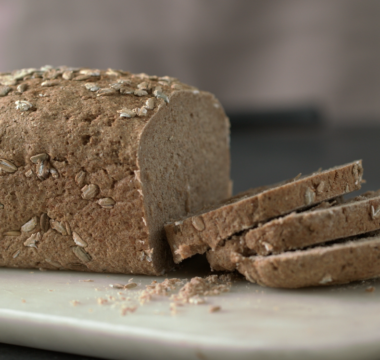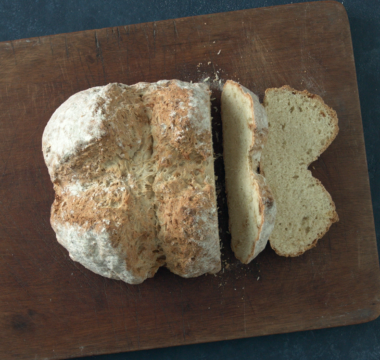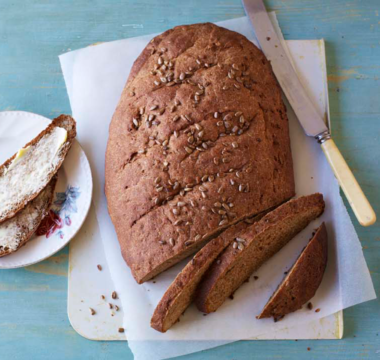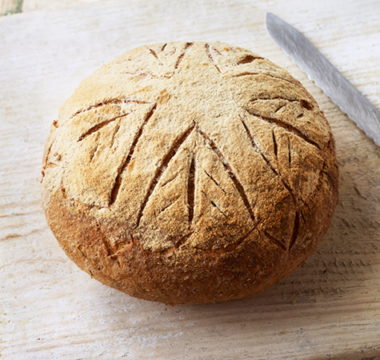Soft, pillowy homemade bread is only a couple of hours away with our classic white bloomer – and you don’t even need a stand mixer. Make sure your water is lukewarm – around body temperature (about 36°C) – as this is just the right temperature to activate the yeast.
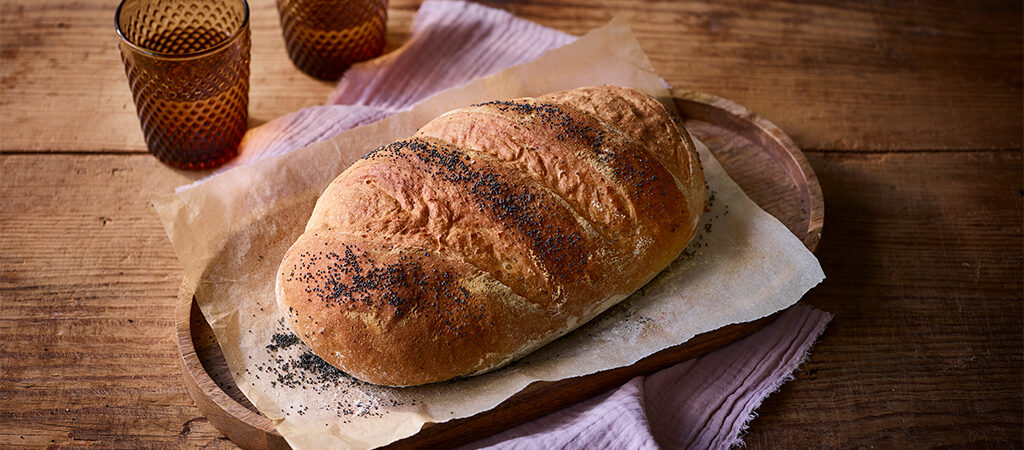
- Ingredients
- Method
Method
Step 1
Mix the flour, yeast and salt together in a large bowl. Make a well in the centre and pour in 300ml of the lukewarm water and all the oil. Mix vigorously with a round-bladed knife until the mixture comes together in a craggy, lumpy dough. Add enough of the remaining water to achieve a soft but not sticky dough. It will still be a little lumpy and unevenly hydrated at this stage.
Step 2
Tip out the dough onto a lightly floured work surface and bring it together into a ball. Knead it for 8–10 minutes, until the dough becomes smooth and elastic (it should bounce straight back when gently pressed).
Step 3
Form the dough into a ball and place it in an oiled bowl. Cover it with a damp cloth and set it aside in a warm place for 45 minutes–1 hour, or until doubled in size.
Step 4
Turn out the risen dough onto a lightly floured work surface. Gently knead it two or three times – this is called knocking back and redistributes any large air pockets to give an even rise. Avoid over-kneading at this stage, or the bread will lose its lightness.
Step 5
To shape the loaf, flatten the dough into a 25 x 20cm rectangle, patting it out with your fingers and gently pulling the edges.
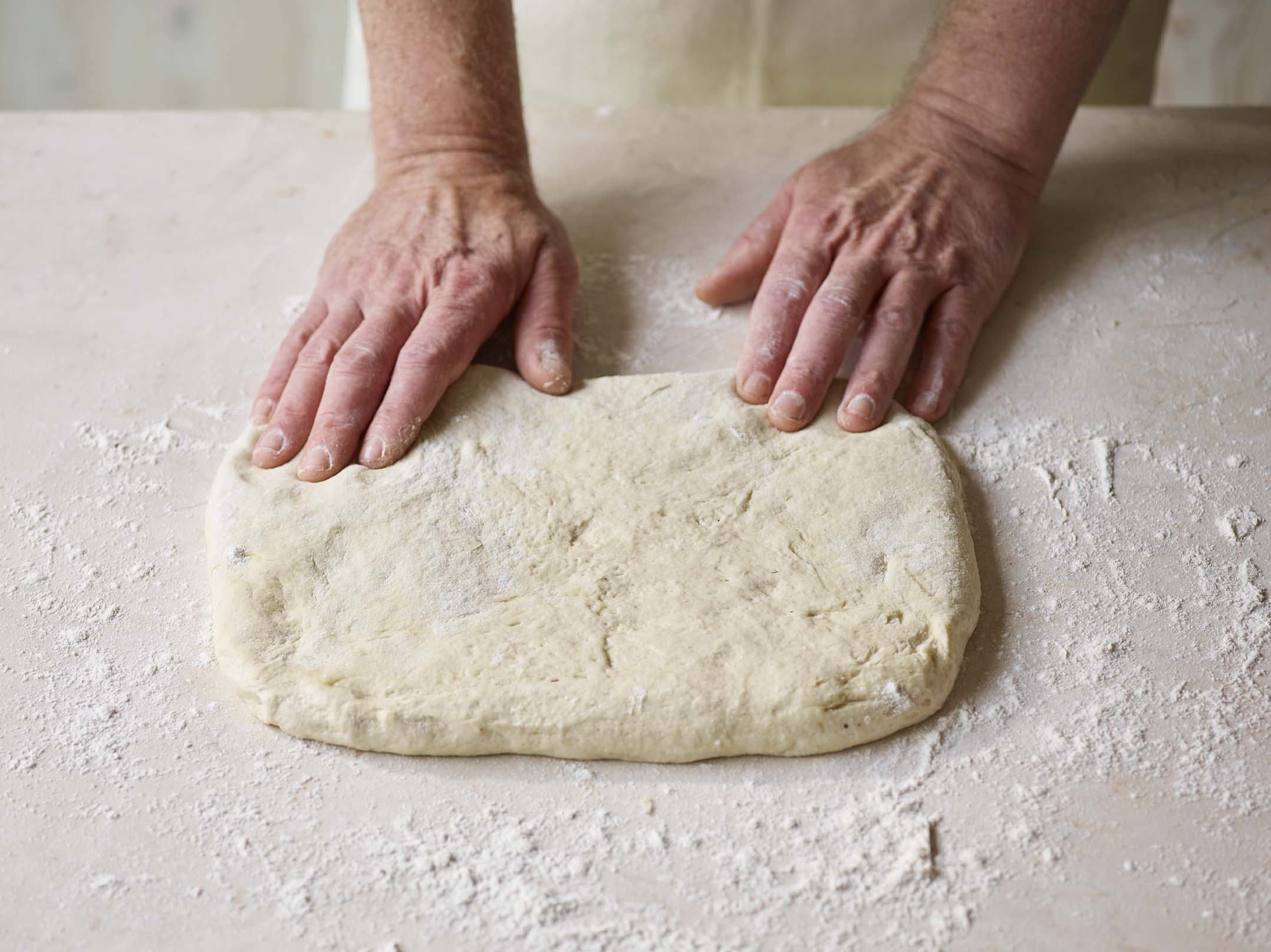
Step 6
Fold both short ends into the centre (like folding a business letter), then turn the dough through 90 degrees.
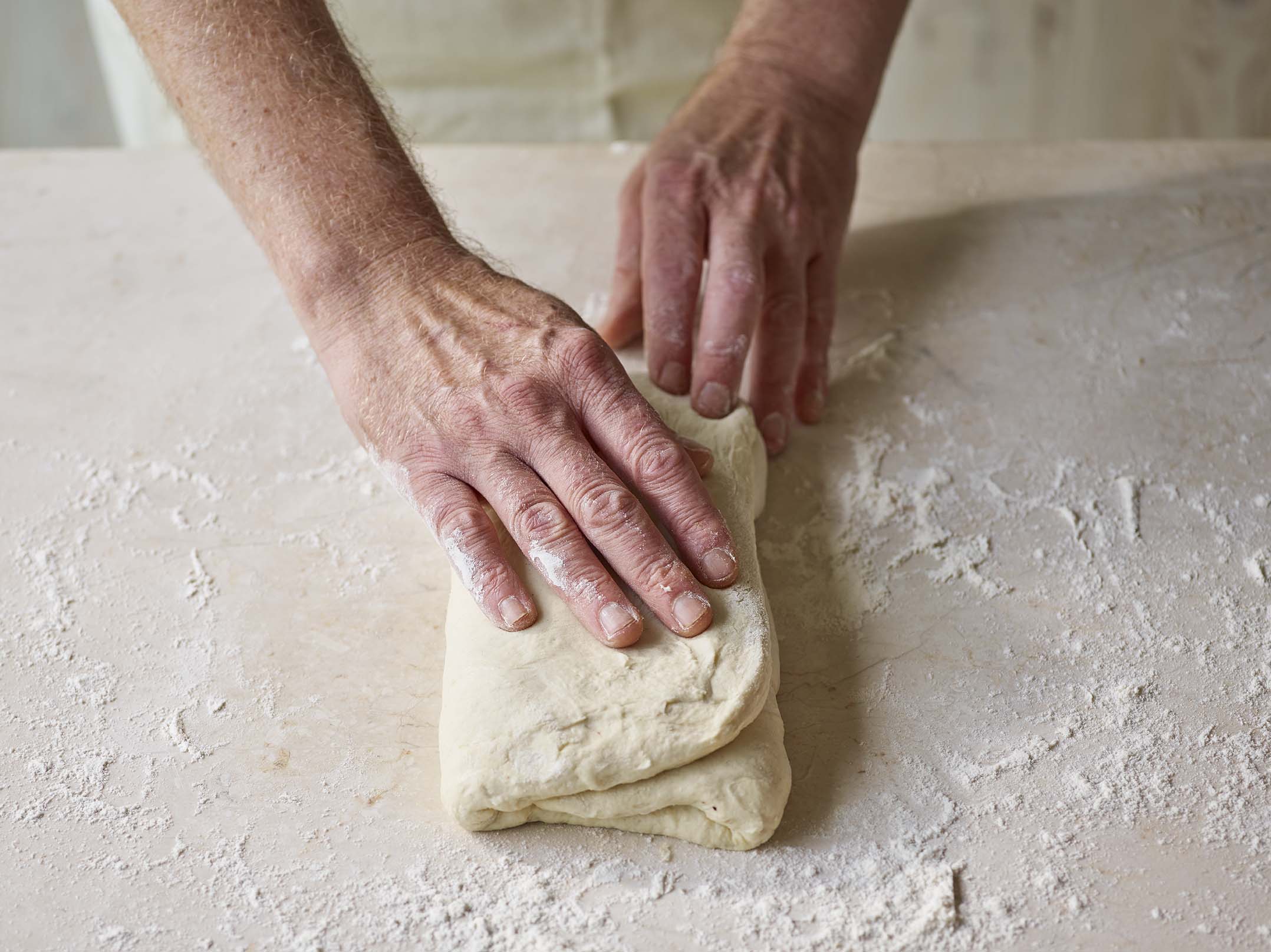
Step 7
Flatten the dough once more into a rectangle, then, starting from one of the short ends, roll it up into a tight cylinder.
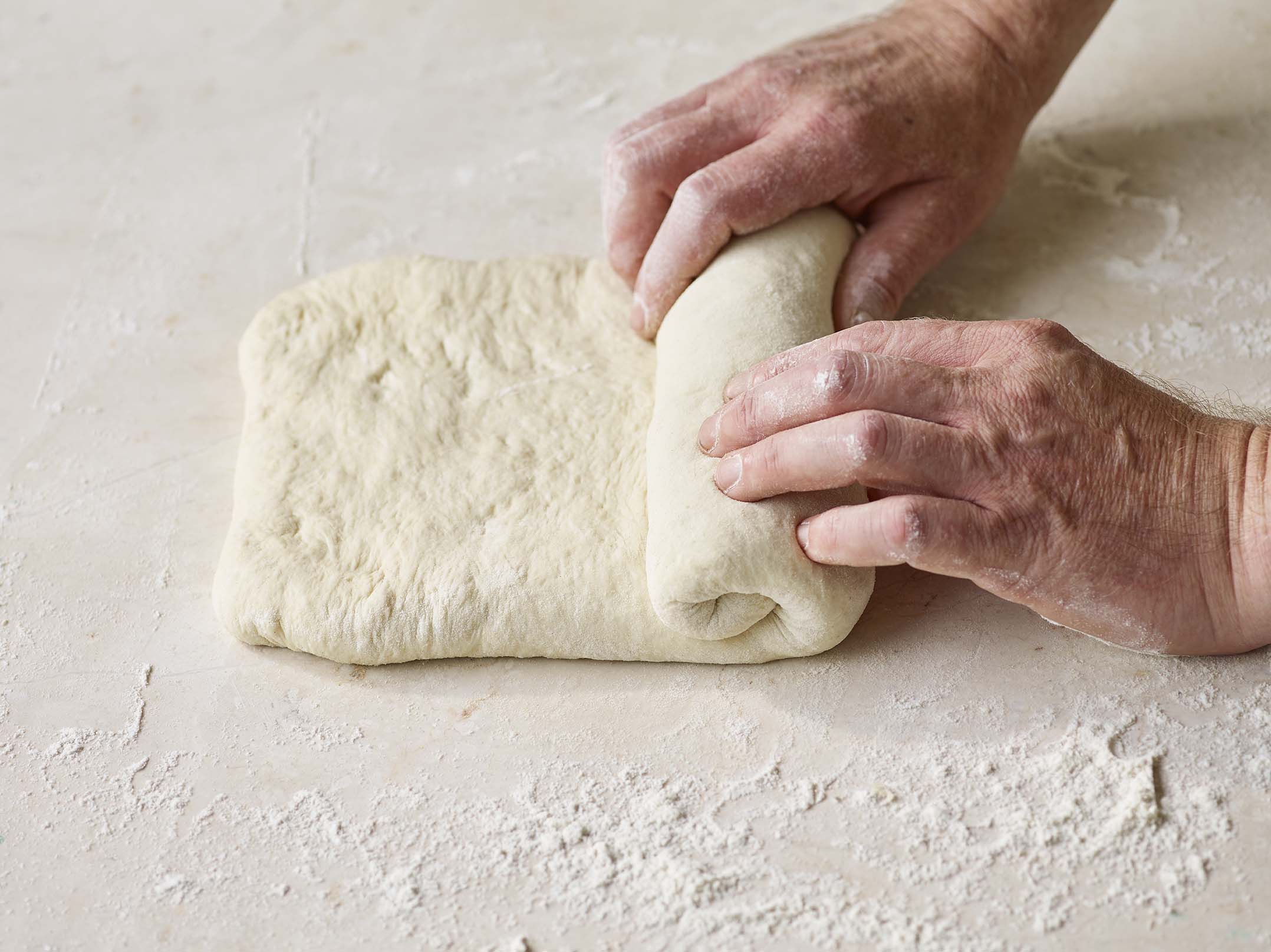
Step 8
Seal both ends by pressing down firmly with the palm of each hand, then tuck the ends under the loaf. You should be left with a taught, oval-shaped loaf.
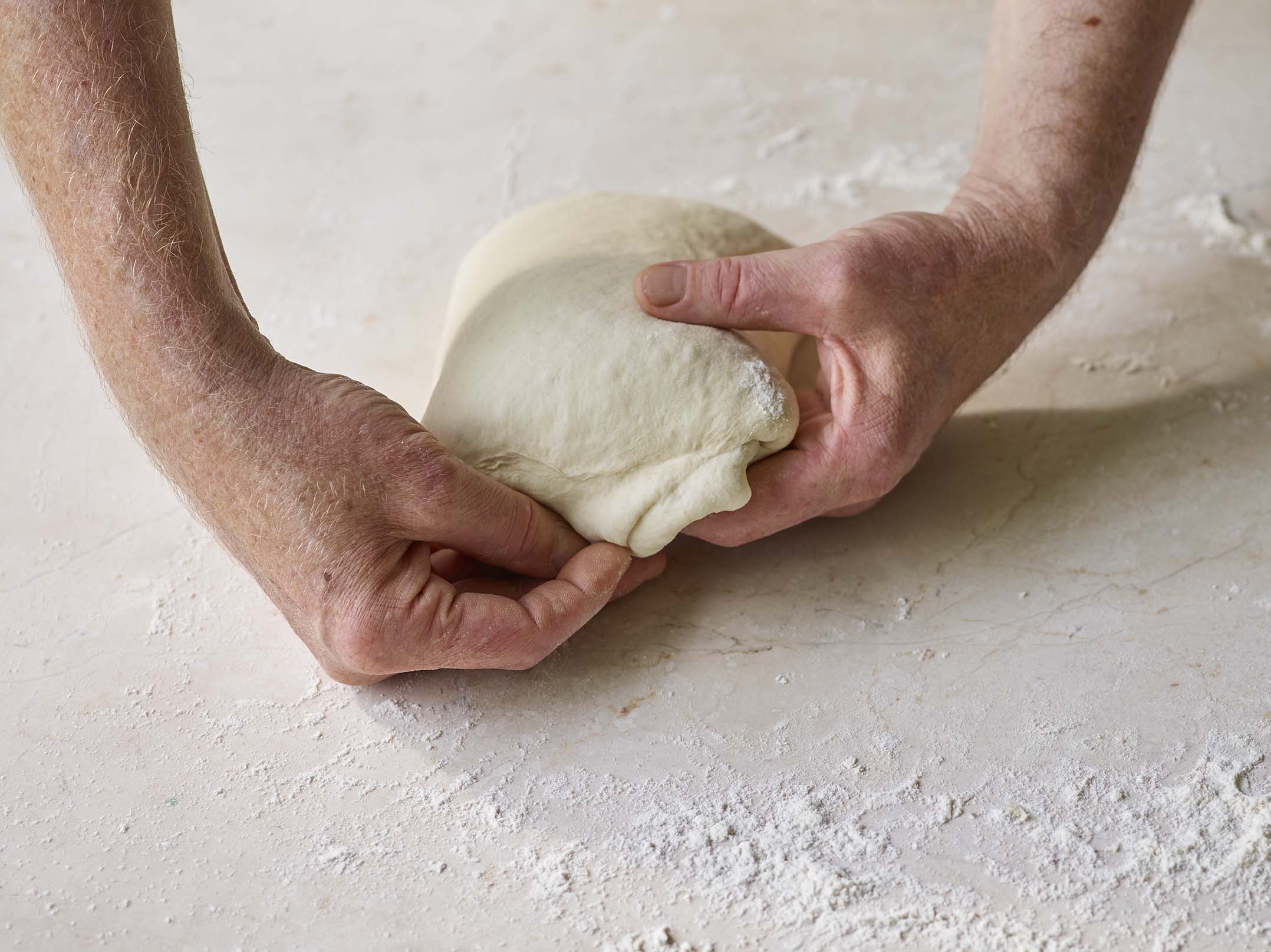
Step 9
Transfer the shaped loaf to the prepared baking tray, seam side downwards. Sprinkle over the poppy seeds, if you wish, then dust lightly with flour. Using the sharp knife or scalpel, make three 2cm-deep slashes in the top of the loaf at an angle. Cover the loaf with a clean tea towel and set it aside to prove for 35–45 minutes, until almost doubled in size.
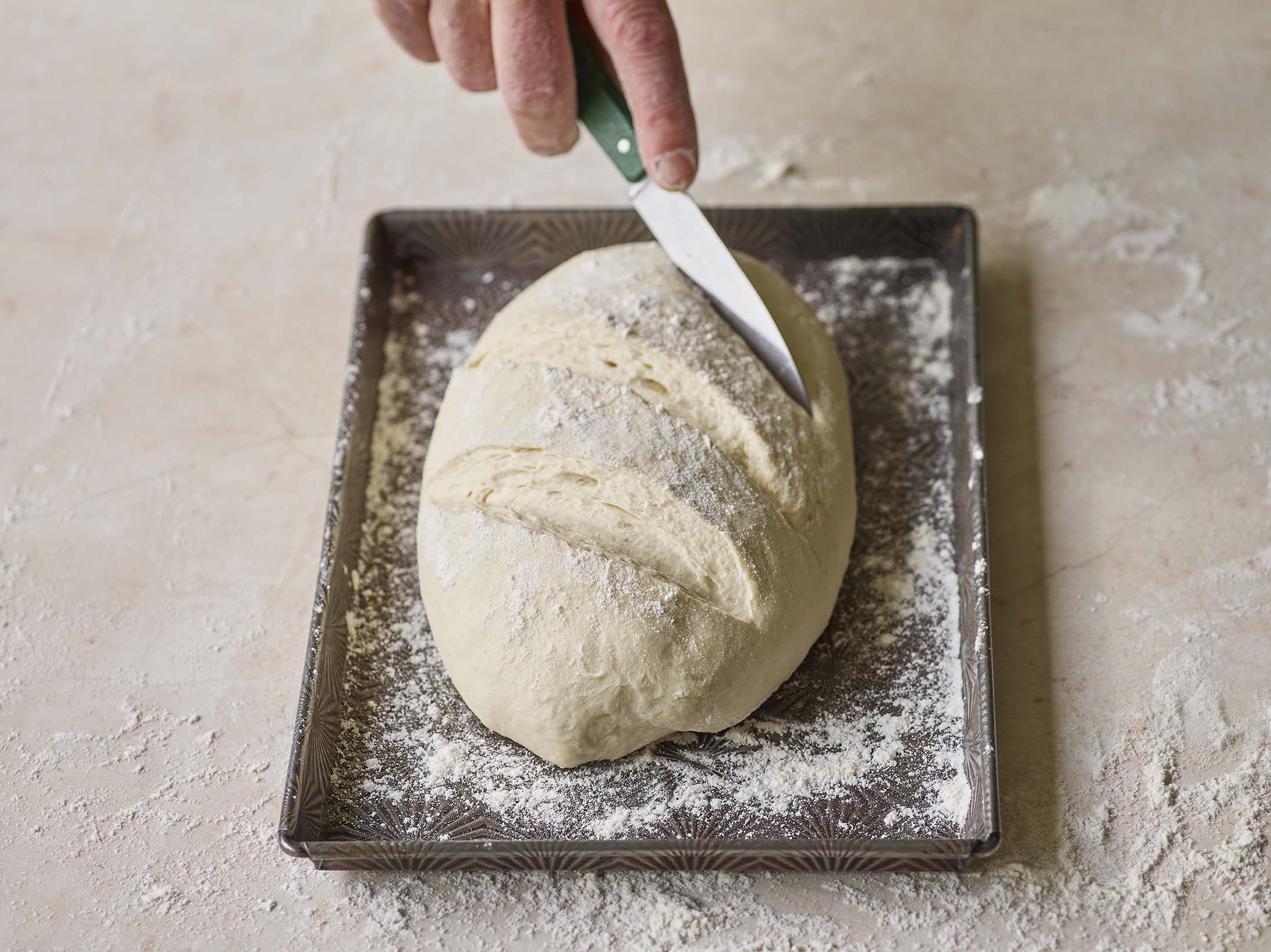
Step 10
While the loaf proves, heat the oven to 230°C/210°C fan/450°F/Gas 8. Put an empty roasting tin in the bottom of the oven to heat up.
Step 11
When you’re ready to bake, put the risen loaf (on its tray) into the oven and pour about 100ml of cold water into the hot roasting tin in the bottom of the oven and shut the oven door. The burst of steam will help form a crisp crust on the loaf.
Step 12
Immediately lower the oven temperature to 220°C/200°C fan/425°F/Gas 7. Bake the loaf for 30–35 minutes, until golden. To test whether or not the loaf is fully baked, tap the underside. It should be firm and sound hollow. Transfer the loaf to a wire rack and leave it to cool completely before slicing and eating.

